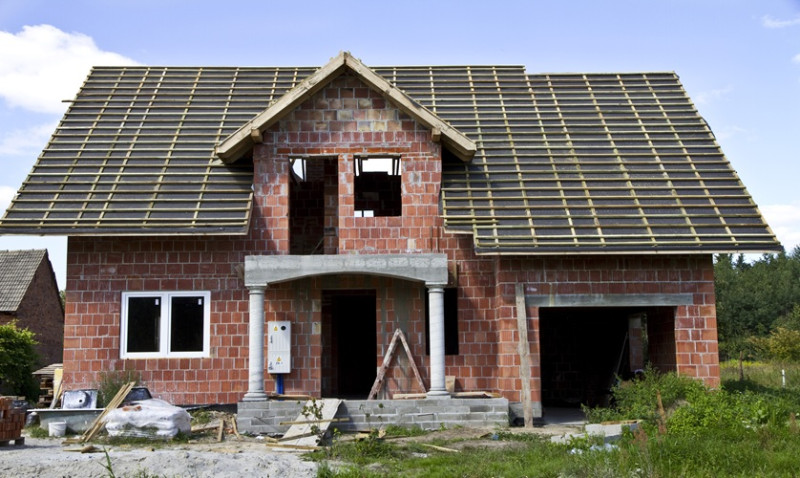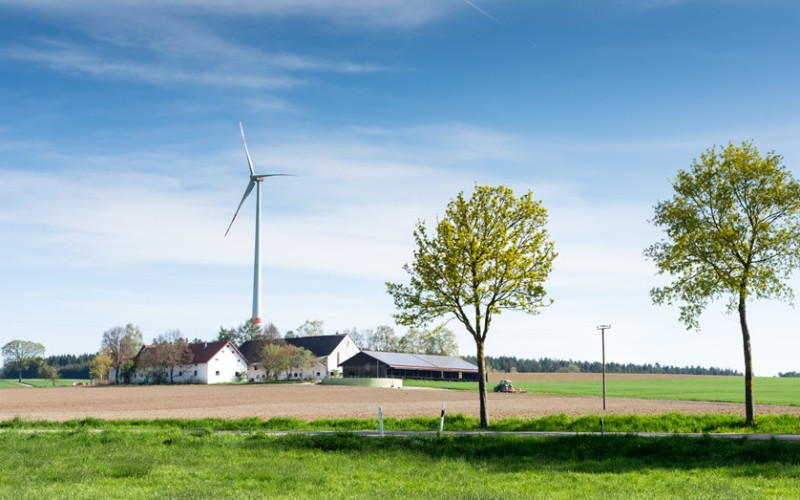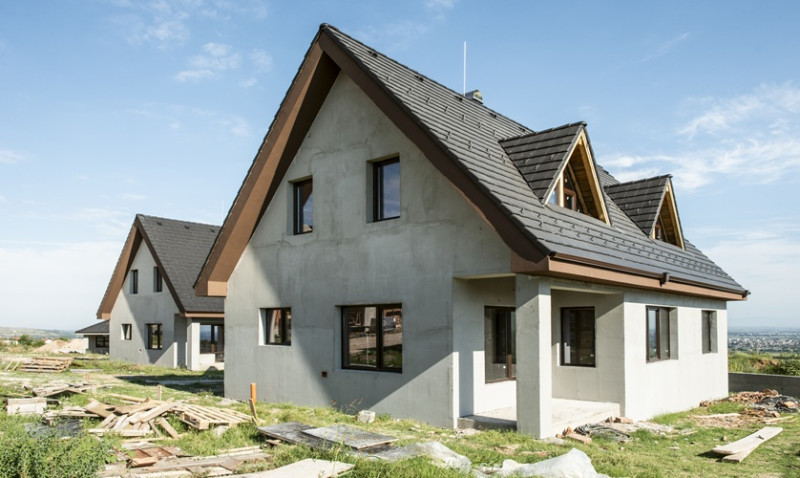
Whether you're a DIY enthusiast looking to start with a clean slate or a professional tradesperson evaluating current market trends, the idea of buying a new build property can be incredibly appealing. From energy efficiency and modern layouts to potential cost savings on maintenance, there are plenty of reasons why new construction continues to attract homebuyers across the UK. However, it's not all sunshine and smooth finishes—there are important challenges and drawbacks that also need to be considered.
In this article, we’ll explore the pros and cons of buying new construction homes, helping you weigh the benefits against the potential downsides. Whether you're a young professional jumping on the property ladder, an architect planning your next investment, or a homeowner looking to redesign your living space, understanding the ins and outs of new builds will help you make more informed decisions.
Pros of Buying New Construction
1. Modern Features and Layouts
New build homes are designed with contemporary living in mind. Open-plan kitchens, integrated appliances, en-suite bathrooms, and spacious storage areas are examples of features that are now standard in many developments. These modern layouts match current lifestyle trends, offering more functional and flexible living spaces compared to older, more compartmentalised homes.
Many new builds also offer smart home technology, such as pre-installed wiring for home automation or integrated energy monitoring systems. These features not only add convenience but can also be appealing selling points if you decide to move in the future.
2. Energy Efficiency
One of the most touted advantages of new construction is energy efficiency. Most homes built in the last few years comply with stricter building regulations, meaning better insulation, double or triple-glazed windows, and efficient boilers or even heat pumps. This can lead to significant savings on energy bills—which, given the soaring utility prices in the UK, is no small benefit.
Additionally, new homes often include environmentally friendly systems, such as rainwater harvesting or solar panels. These sustainability efforts are not only good for the planet but also help future-proof your home against incoming green regulations.
3. Fewer Repairs and Maintenance Costs
Unlike period properties or fixer-uppers, new builds rarely require upfront renovation. This can save homeowners thousands in unexpected maintenance costs. The plumbing, electrics, and structural elements come with warranties, often for 10 years or more, under schemes like NHBC (National House Building Council) guarantees.
For busy professionals or families, this “move-in ready” aspect is a major advantage. Not having to deal with contractors, permits, or delays in repairs can make the buying and settling process far smoother.
4. Customisation Opportunities
Buying off-plan allows some flexibility in the property’s interior design. Developers often let you choose kitchen finishes, tiling, flooring options, or colour schemes, especially if the build is still in its early stages. This is ideal for DIY fans and interior designers who enjoy crafting unique yet cohesive spaces.
This may not match the full creative freedom of a self-build, but it offers a great middle ground for those who want a personalised home without the stress and risks involved in managing an entire construction project themselves.
5. Incentives and Schemes
To make new builds more attractive, developers and lenders frequently offer incentives. These can include contributions towards stamp duty, free upgrades, discounts for first-time buyers, or even part-exchange deals for current homeowners. The UK government has also introduced various schemes to support new home purchases, such as Lifetime ISAs and first-time buyer reliefs.
For those entering the market, these perks can make the financial commitment more manageable—though it’s essential to read the fine print and ensure you're not paying over the odds on the base property price.
Cons of Buying New Construction
1. Premium Prices
New homes often come at a premium price per square foot when compared to older properties of similar size and location. You're not just paying for the house but also for the fact that it's new, with clean finishes, warranties, and up-to-date compliance with building standards.
This premium can make it more challenging to build immediate equity, especially if the market dips or there's a glut of similar properties in the area. It's important to view a new home as a long-term investment rather than a short-term flip opportunity.
2. Smaller Plots and Less Character
Many new developments maximise the number of houses built on a plot of land, leading to smaller gardens, tighter spacing between homes, and generally less land ownership. If you're someone who values privacy or dreams of expansive outdoor space, this could be a significant disadvantage.
Additionally, new builds can sometimes feel bland to those who appreciate period features, high ceilings, or unique architectural elements. Character is something many UK buyers prize, and new homes can occasionally fall short in delivering charm and individuality.
3. Snagging Issues
Even high-end new builds are not immune to construction issues. In fact, snagging problems—ranging from uneven walls to poorly fitted skirting boards—are common in the first year after completion. While these are usually covered under warranty, resolving them can be time-consuming and require multiple follow-up appointments.
It’s highly recommended to hire a snagging surveyor once the home is completed to identify issues before your warranty expires. This is an added cost but can save headaches down the line.
4. Delays and Uncertainty
Buying off-plan introduces a level of unpredictability into the buying journey. Construction delays due to weather, labour shortages, or supply chain issues can push back moving dates by months. This can be especially problematic if you’re arranging removals, selling another property, or ending a rental lease.
While most developers give estimated timelines, these are not guarantees. Always have a contingency plan in place if you’re considering buying a home that isn’t yet completed.
5. Limitations on Customisation Post-Completion
Although some developers offer interior customisation pre-build, post-completion renovations can be tricky. Some homeowners discover restrictions in covenants imposed by developers, such as rules against changing external colours, fencing types, or landscaping.
This can be frustrating for those who buy with the intention to heavily redecorate or redesign, as permission may be needed for changes that wouldn’t require approval in older or detached homes.
Comparison Table: New Build vs Older Homes
| Feature | New Build | Older Home |
|---|---|---|
| Energy Efficiency | High – Modern insulation, new heating systems | Varies – Often outdated unless retrofitted |
| Maintenance Costs | Low initially – Warranties included | Potentially high – Age-related repairs |
| Design Character | Modern but can feel uniform | High – Historical features and individuality |
| Outdoor Space | Typically smaller gardens, less privacy | Larger plots and mature landscaping |
| Upfront Cost | Often higher per sq. ft. due to “new” factor | Potential for better value with renovation |
| Customisation Potential | Some pre-build options; limited after | High – More freedom to remodel |
Final Thoughts
New construction homes offer a tempting package: low initial maintenance, high energy performance, contemporary layouts, and modern design. They’re ideally suited for buyers who want to avoid the hassle and unpredictability of renovations—especially young professionals and families looking for a hassle-free move.
That said, it’s essential to go into the purchase with your eyes open. Smaller room sizes, snagging issues, and limited character could be deal-breakers depending on your lifestyle and preferences. For architects, designers, and tradesmen, new builds can offer a canvas of possibilities so long as you understand the limits around customisation.
Ultimately, the right decision depends on your priorities. If convenience, energy savings, and modern features top your list, a new build could be a smart move. If charm, individuality, and renovation potential speak to your soul, it may be worth exploring older homes that you can transform over time.





